How to Grow a Durian Tree: A Beginner’s Guide
Durian trees produce a unique fruit that some people love and others avoid because of its strong smell. Known as the "king of fruits," durians have a creamy, rich flavor and require specific conditions to grow well. Here’s everything you need to know to grow a durian tree—from picking the right type to harvest time.

1. Getting to Know Durian Trees
Durian trees are native to Southeast Asia and grow best in warm, tropical climates. They’re tall, reaching up to 50 meters in the wild, and have spiky fruit that stands out. Durian trees thrive in hot, humid conditions with plenty of sunlight. If grown from seed, they take about 7-10 years to produce fruit, but grafted trees can start producing sooner.
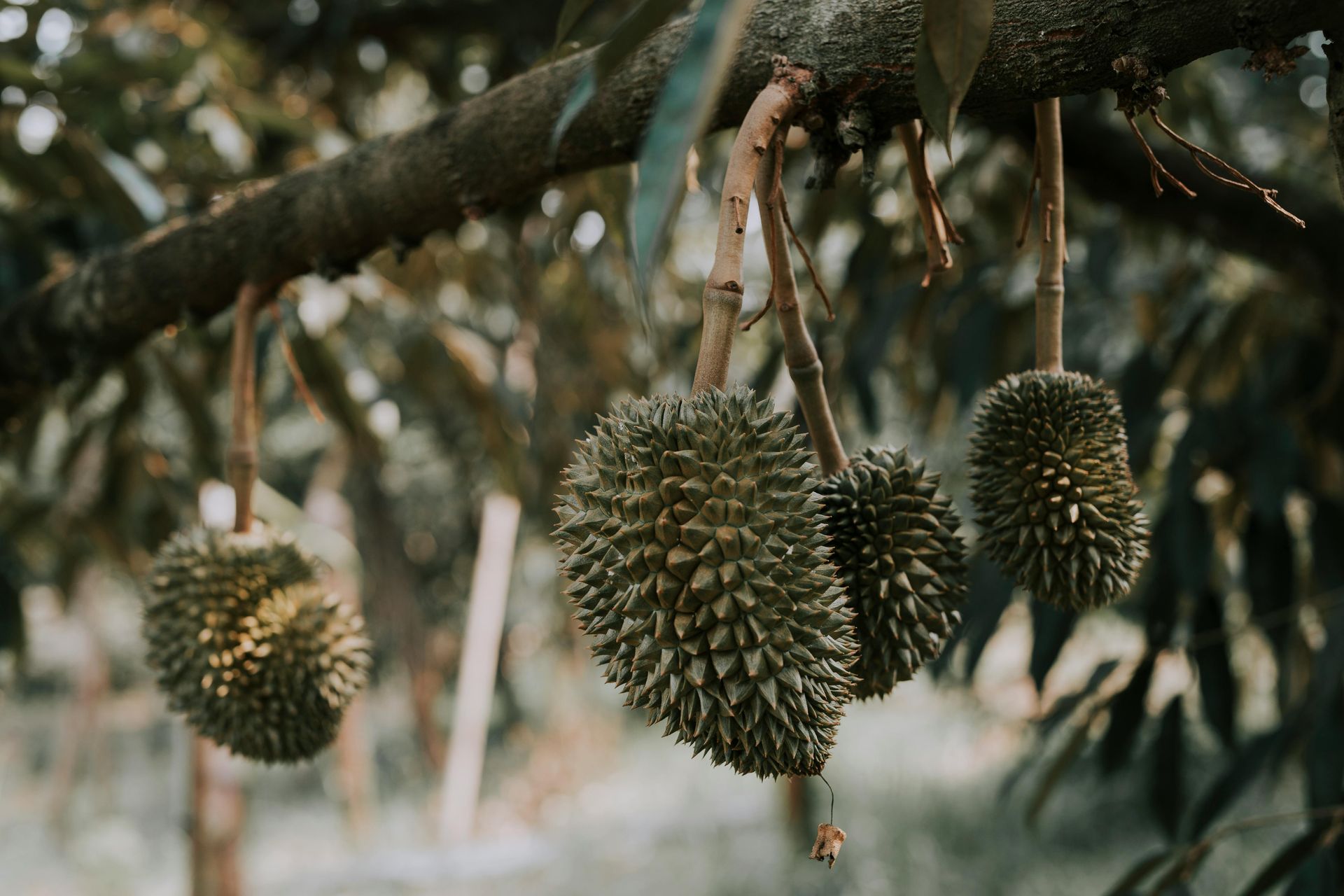
2. Picking the Right Type of Durian
Durians come in different varieties, each with its own taste and growth needs. Choosing the right type can improve your chances of success:
- Popular Varieties: Some well-known types are Monthong (sweet and mild), Musang King (strong and creamy), and D24 (balanced between sweet and bitter).
- Seed vs. Grafted Trees: Growing from seed takes longer, but grafted trees often grow faster and are more likely to produce good fruit.
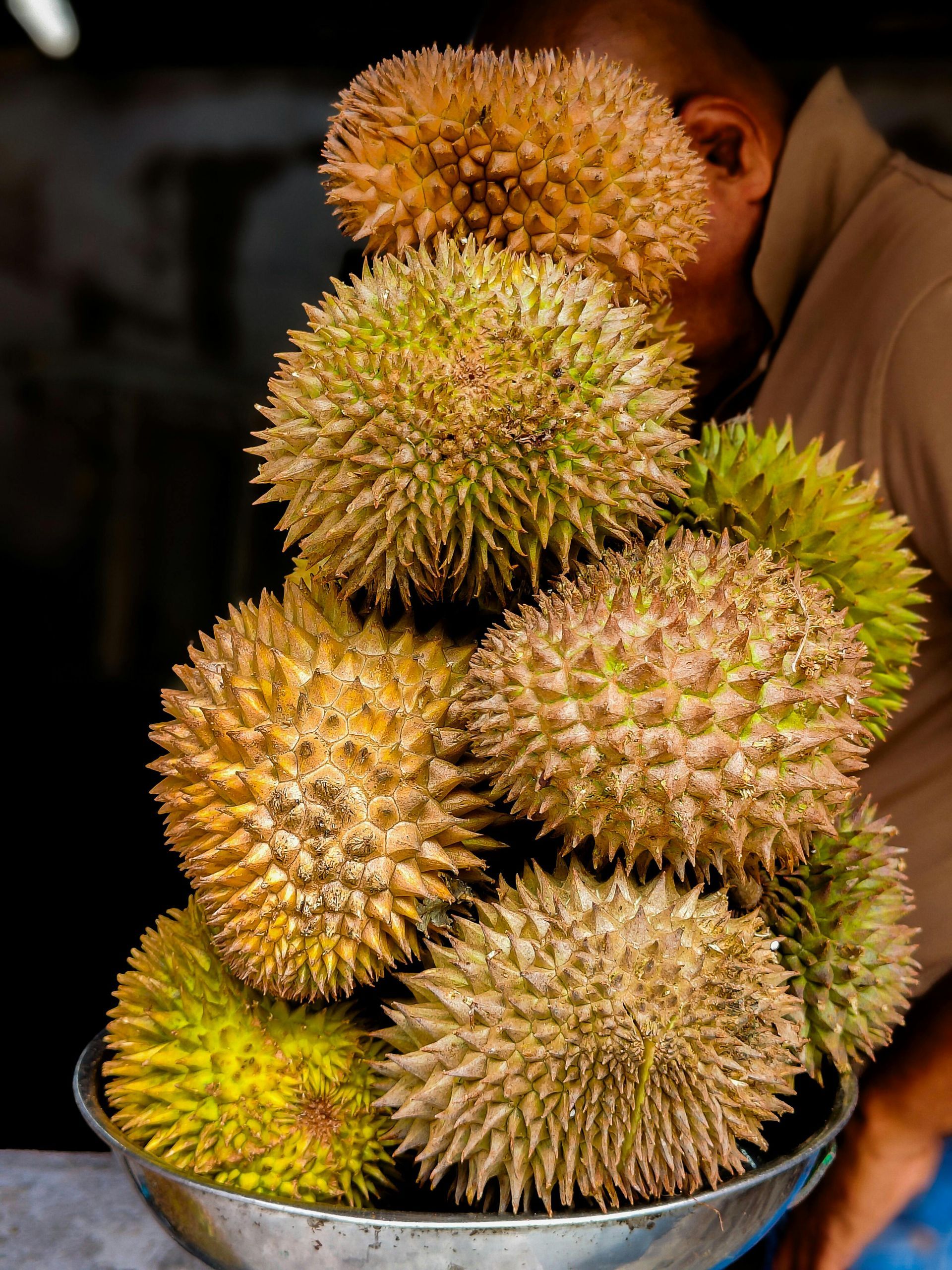
3. Preparing the Best Spot for Your Tree
Durian trees are sensitive to their environment, so it’s important to choose the right spot for planting:
- Climate and Sunlight: Durians grow best in a tropical climate with temperatures between 24–30°C (75–86°F) and need full sun.
- Soil Requirements: The best soil for durian trees is rich and well-drained, with a slightly acidic to neutral pH (5.0–6.5). Adding organic matter like compost can improve the soil.
- Spacing and Depth: Since durian trees grow large, plant them at least 30–40 feet apart to give them room.
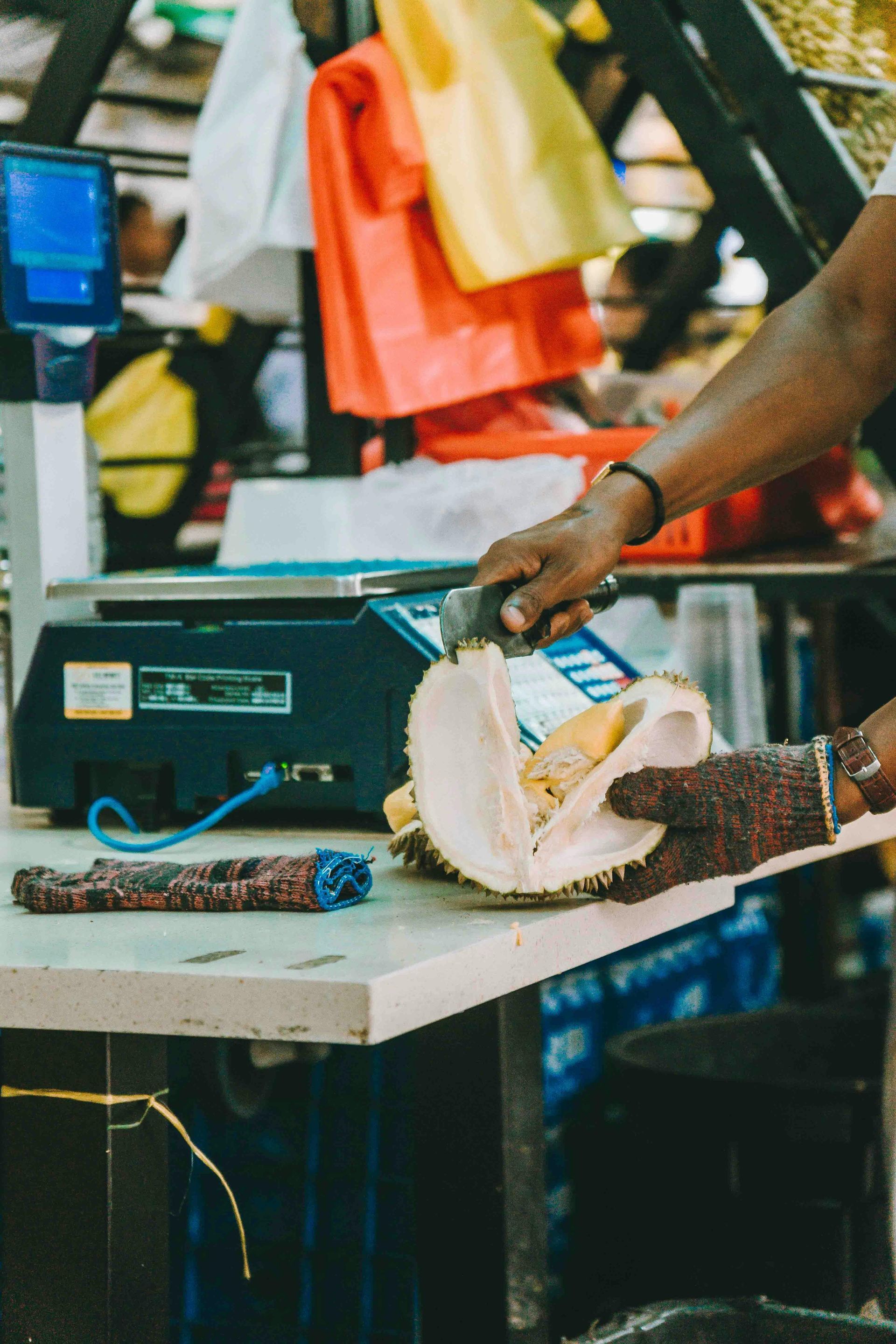
4. Planting Your Durian Tree
After preparing your spot, you’re ready to plant:
- Digging the Hole: Dig a hole twice as wide and deep as the tree’s root ball so the roots have room.
- Setting the Tree: Place the tree in the hole so it stands straight, then fill it in with soil, pressing down gently.
- Watering: Water the tree right after planting to help the soil settle. Be careful not to overwater—durian trees don’t like soggy soil.
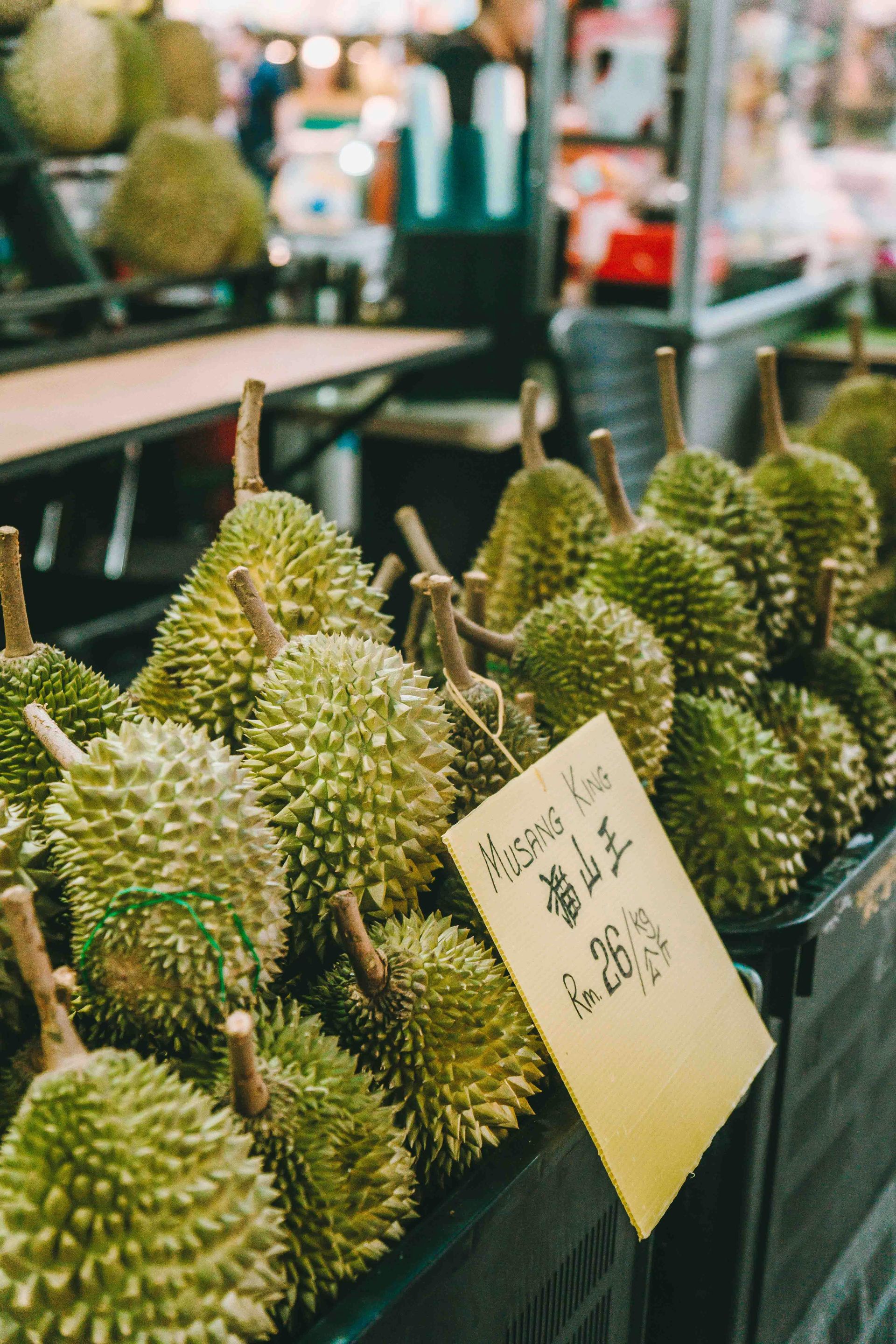
5. Caring for Your Durian Tree
Proper care is key to growing a healthy durian tree. Here’s how:
- Watering: Durian trees need consistent water but are prone to root rot if overwatered. Water deeply once or twice a week, especially during dry spells.
- Fertilizing: Use a balanced fertilizer with nitrogen, phosphorus, and potassium, plus trace minerals like magnesium. Fertilize especially during the growing season.
- Pruning: Trim off dead or diseased branches to improve air circulation and reduce pest risks. Pruning also helps the tree grow a strong structure in its early years.
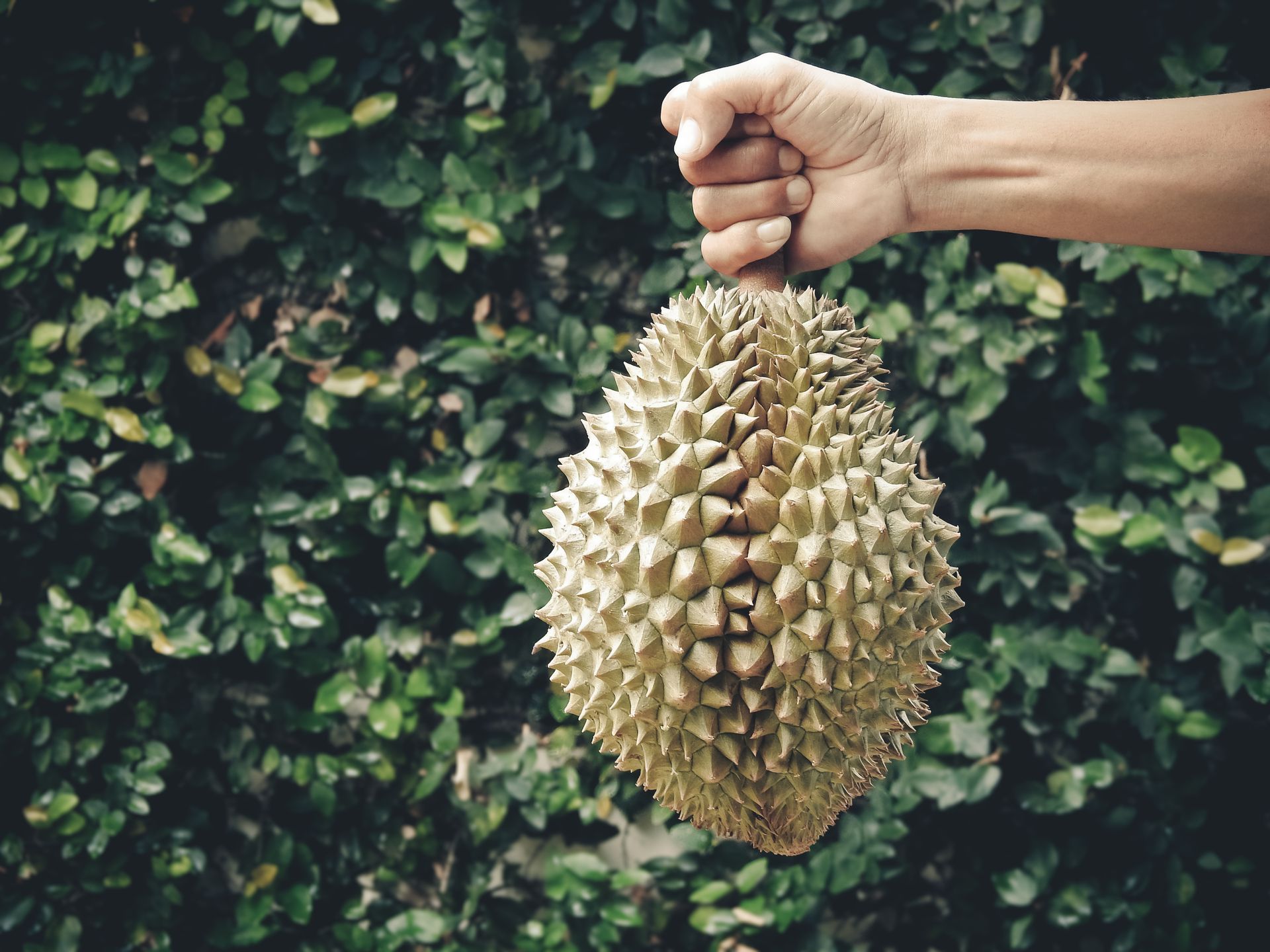
6. Getting Your Tree to Bear Fruit
With the right conditions, a durian tree can start to produce fruit after a few years, especially if it’s grafted.
- Flowering to Fruiting: After flowering, it takes about 3–4 months for durian fruit to mature.
- Pollination: Durian trees are usually pollinated by bats. In areas where bats are rare, you may need to pollinate by hand using a soft brush to transfer pollen between flowers in the evening.
- Fruiting Conditions: Keep the soil moist and use a potassium-rich fertilizer during the flowering period to help the fruit develop.
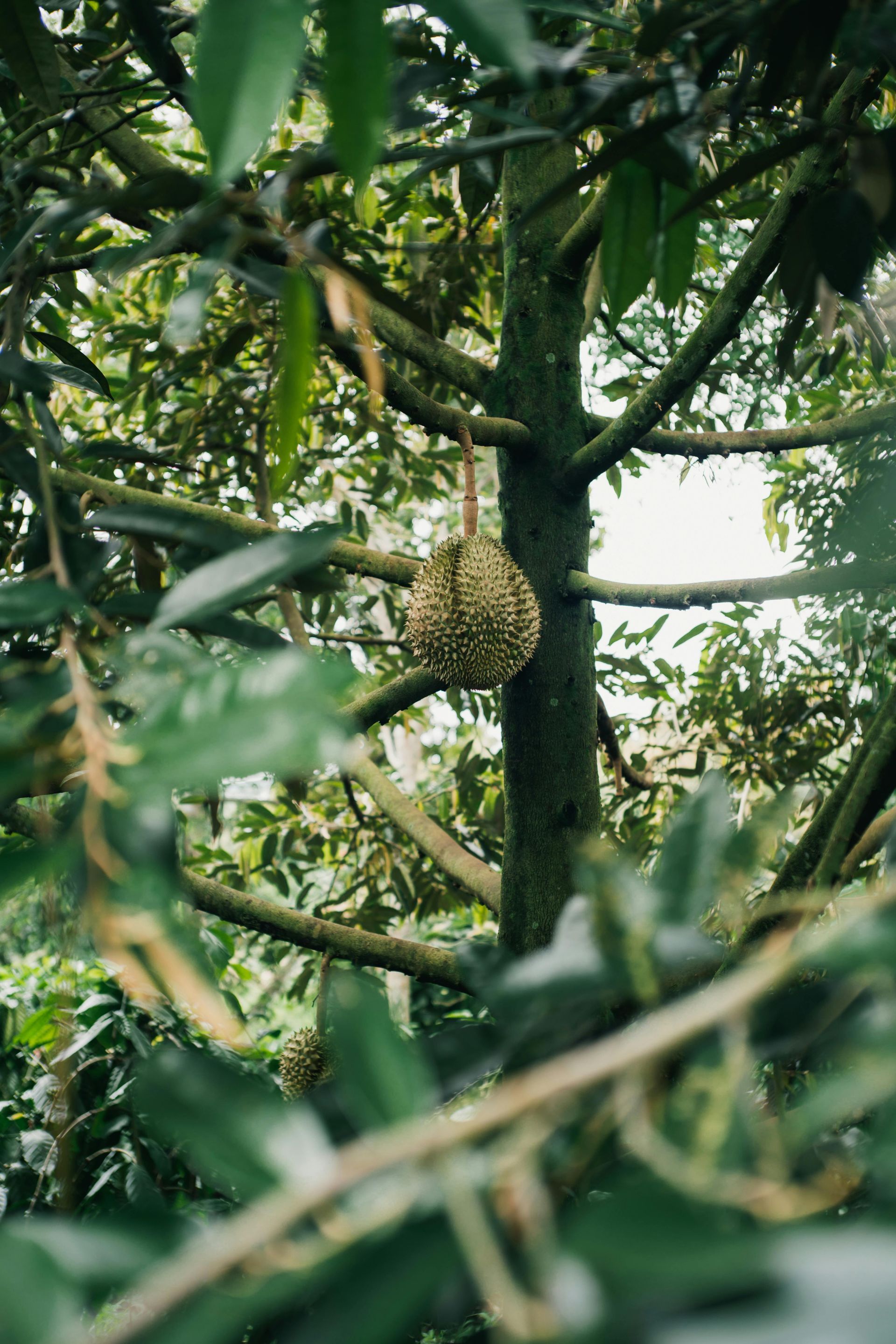
7. Harvesting Your Durian
Harvesting durian requires careful timing to get the best flavor and texture.
- Signs of Ripeness: A ripe durian will have a strong smell, and its outer shell may show small cracks. Some growers let the fruit fall naturally, but it’s safer to hand-pick it from tall trees.
- How to Harvest: Wear gloves to protect your hands from the spiky shell, or use a tool to carefully cut the fruit from the tree.
- Storing Your Durian: Fresh durian is best enjoyed right away. You can refrigerate it for a few days, but freezing may change its texture.
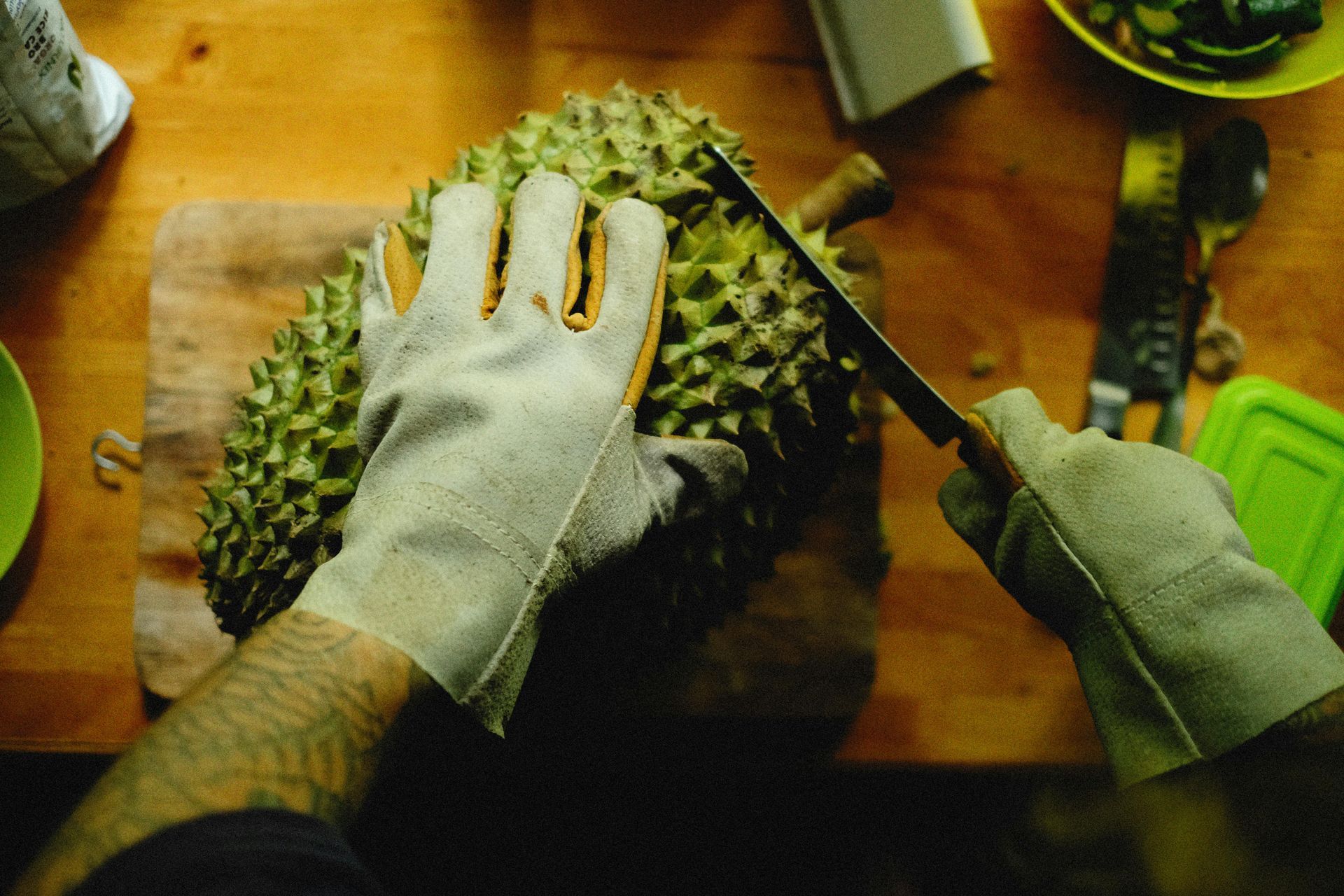
8. Common Problems and How to Handle Them
Growing durian has some challenges, but knowing what to watch out for can help:
- Pests and Diseases: Durian trees can attract pests like aphids, mealybugs, and stem borers. Use organic insecticides or neem oil to manage pests. For fungal diseases like root rot, ensure the soil drains well.
- Weather Sensitivity: Durians need just the right amount of water. In dry spells, water them deeply, and during heavy rains, make sure the soil doesn’t stay waterlogged.
- Soil and Nutrient Imbalance: If leaves turn yellow, it might mean the tree needs more nutrients like nitrogen or magnesium. Adjust the fertilizer as needed.
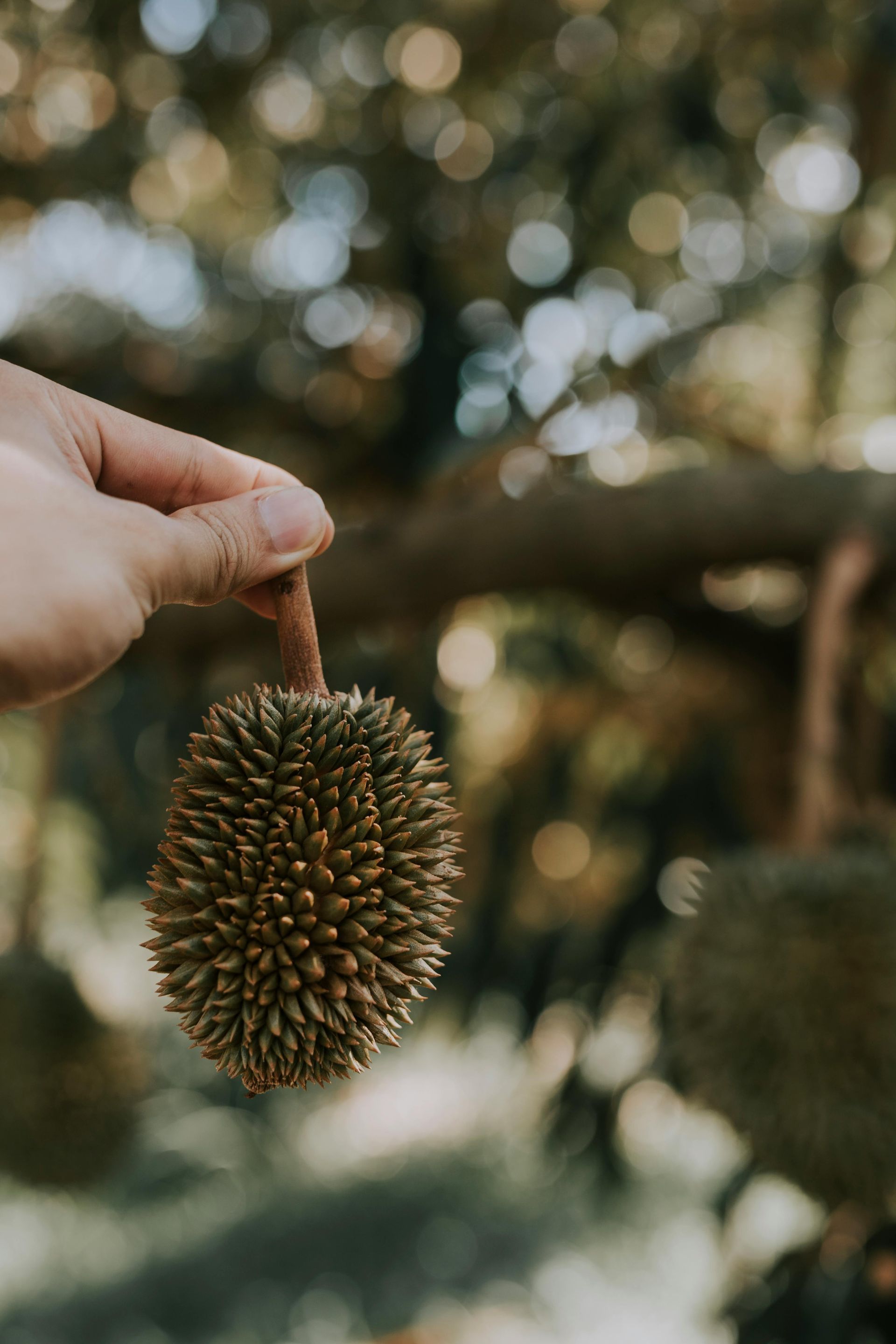
9. Enjoying Your Homegrown Durian
Durian is highly valued for its taste and nutritional benefits.
- How to Eat It: Durian can be enjoyed fresh, blended into smoothies, or used in various dishes. Try it in desserts like ice cream or in savory Asian recipes.
- Health Benefits: Durian is rich in fiber, vitamin C, potassium, and antioxidants.
- Replanting and Future Harvests: Durian trees can produce offshoots or “suckers” at their base, which you can use to grow more trees.
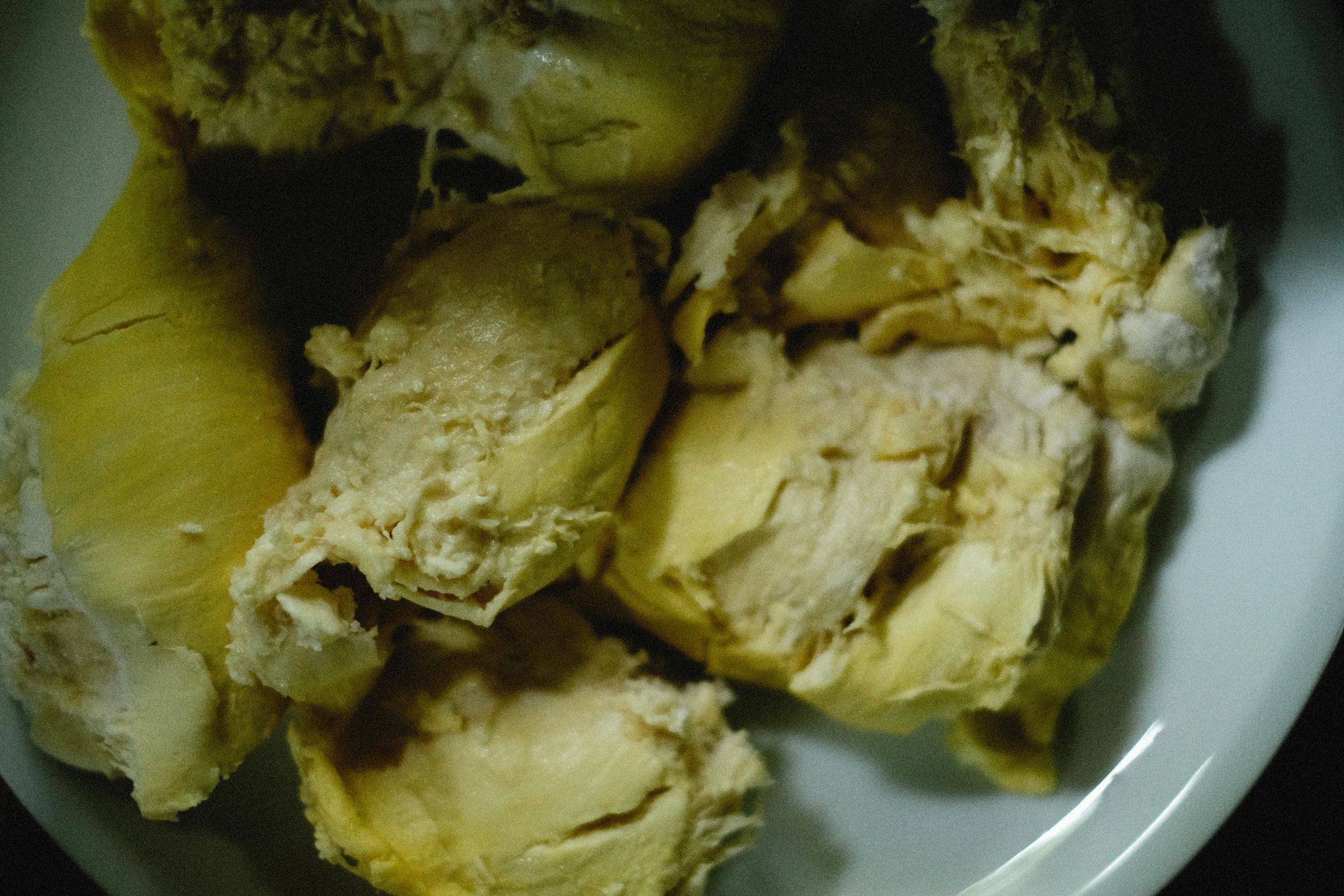
Growing a durian tree takes time and effort, but it can be a worthwhile project if you love this unique fruit. By choosing the right type, finding a good spot, and giving your tree proper care, you can enjoy homegrown durians right from your backyard.
